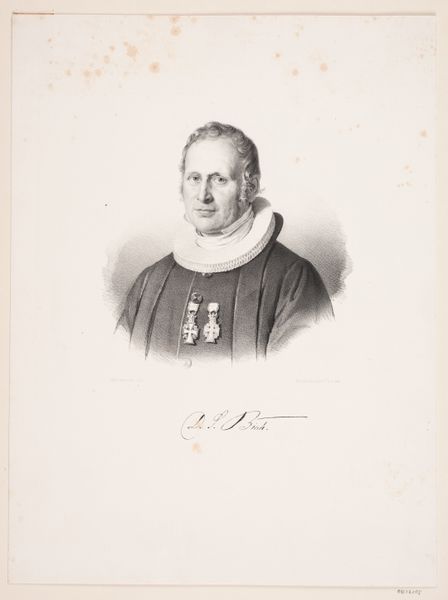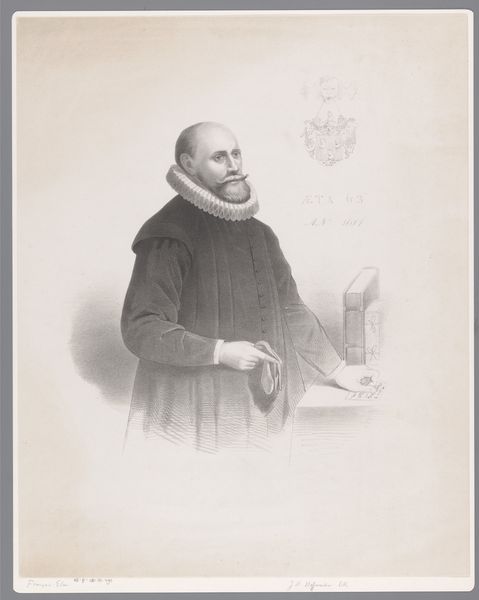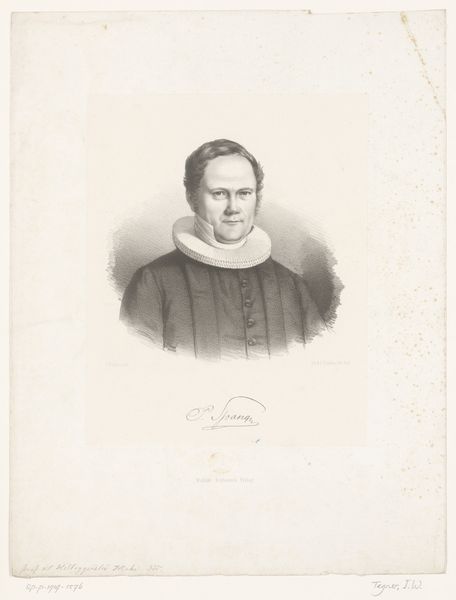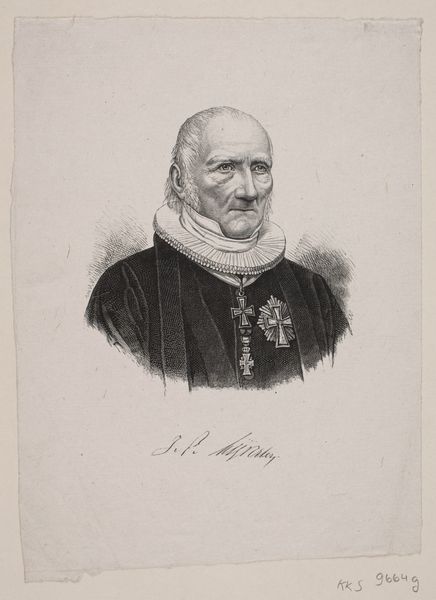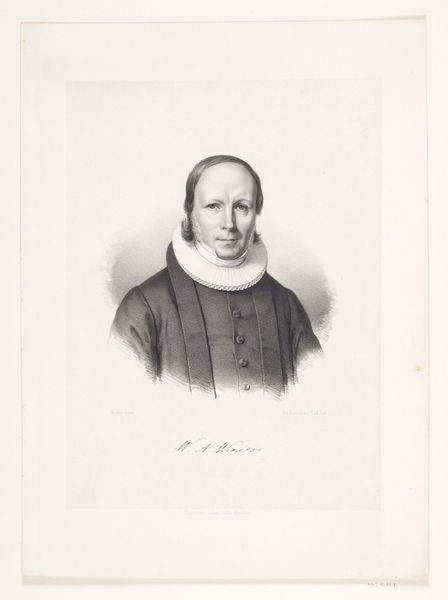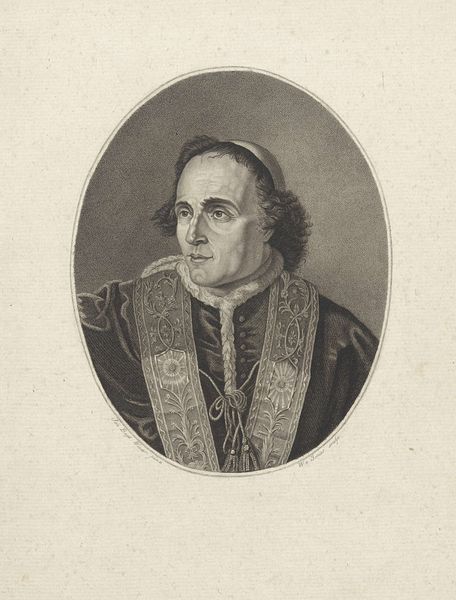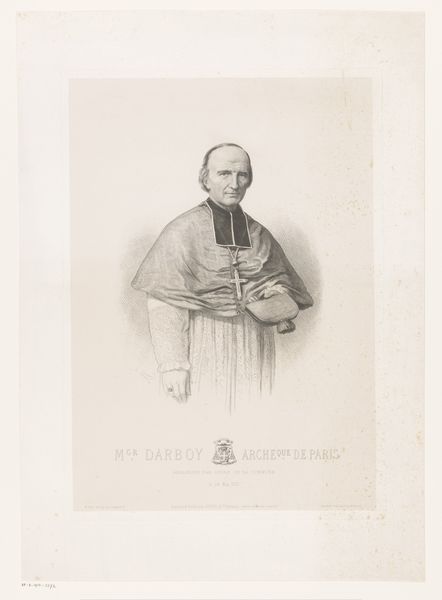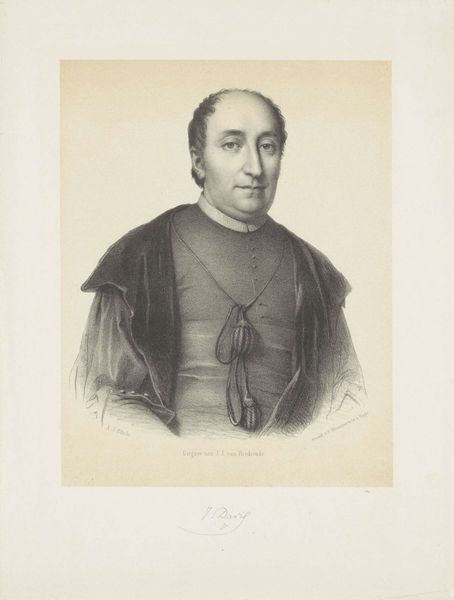
Dimensions: 206 mm (height) x 145 mm (width) (bladmaal)
Curator: Let's take a closer look at this lithograph, "J. H. V. Pauli," created in 1863. It resides here at the SMK, the National Gallery of Denmark. As a print, it suggests broader dissemination. What catches your eye first about this piece? Editor: Immediately, it’s that collar. So starched! And the weight of those medals… You can almost feel the societal pressure he's under. It makes me think of duty, responsibility, perhaps a hint of melancholic resignation? Curator: Interesting. Those visual cues, especially in portraiture, were intentionally crafted. This portrayal falls within the Romanticism movement, though grounded in the concrete depiction of an historical figure. Medals were carefully placed to underscore social standing. The stern expression, though seemingly conveying "melancholic resignation", projects authority during a period defined by shifting political and intellectual discourse. Editor: Right. The "romanticism" feels less about sweeping emotion and more about the almost painstaking detail, rendering a sense of history and... well, importance. It's all in those tiny lines making up his face. And yet, even with that crisp detail, the expression seems guarded. Like he’s seen some things. Or knows too much. Curator: Lithography, as a process, allowed for nuanced tonal gradations and more economical replication of imagery. Thus, these portraits became instruments of crafting public images, and reinforcing elite societal narratives. It's not merely art, but political communications. Editor: A hundred and sixty years later, the sitter still stares, unblinking, directly challenging us. Do you think Pauli himself chose this representation? Did he feel it was authentic? Or just accepted as being a role, literally and figuratively, pressed upon him? Curator: The agency of the sitter is definitely a question. Certainly, such prints, especially official portraits, underwent approval. What is revealing is the collective image, across paintings, sculptures, and prints – forming the cultural figure, reflecting both individual and collective aspirations of the period. Editor: In a way, seeing it framed like that makes me appreciate even more the tiny details, the craft, and, of course, the mystery that the person, J. H. V. Pauli, remains today. We have the shell, but who was inside? Curator: Precisely. We have a carefully curated projection meant for public consumption, prompting us to investigate both subject and society that shaped its making.
Comments
No comments
Be the first to comment and join the conversation on the ultimate creative platform.
